Merck Group
The Merck Group, branded and commonly known as Merck, is a German multinational pharmaceutical, chemical and life sciences company headquartered in Darmstadt, with about 56,000 employees and present in 66 countries. The group includes around 250 companies; the main company is Merck KGaA in Germany. Merck was founded in 1668 and is the world's oldest operating chemical and pharmaceutical company, as well as one of the largest pharmaceutical companies in the world.[5][6]
Merck logo (2015)[1] | |
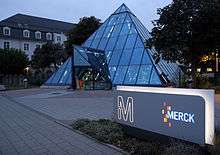 | |
| Publicly traded KGaA | |
| Traded as | |
| ISIN | DE0006599905 |
| Industry | Chemicals pharmaceuticals |
| Founded | 1668 |
| Founder | Friedrich Jacob Merck |
| Headquarters | , Germany |
Area served | Worldwide |
Key people | Stefan Oschmann (CEO and Chairman of the executive board), Wolfgang Büchele (Chairman of the supervisory board) |
| Products | Liquid crystals, life science and performance chemicals, over-the-counter medicines, small molecules and biopharmaceuticals |
| Revenue | |
| € 2,120 billion (2019)[2] | |
| Total assets | $43,811 billion (2019)[2] |
| Owner | E. Merck KG (70.3% of capital)[3][4] |
Number of employees | 56,000 (2019) |
| Website | www |
Merck operates in Europe, Africa, Asia, Oceania and the Americas. It has major research and development centres in Darmstadt, Boston, Tokyo and Beijing. Merck pioneered the commercial manufacture of morphine in the 19th century and for a time held a virtual monopoly on cocaine.
Merck was privately owned until going public on the Frankfurt Stock Exchange in 1995 and is listed on the DAX index of Germany's top companies. The Merck family still controls a majority of 70.3% of the company's shares. The Merck Group includes around 250 companies in 180 countries; the current main parent company of the group, since 1995, is named Merck KGaA, and is itself mainly owned by the former main parent company, E. Merck oHG, which now operates as a holding company.
The American pharmaceutical company Merck & Co. was established as a subsidiary of Merck in 1891, but was nationalized by the United States in 1917, before being privatized again when George W. Merck purchased back the stock in 1919.[7] It is known as MSD (Merck Sharp and Dohme) outside of North America. The original Merck of Darmstadt holds the rights to the name Merck in all countries except the U.S. and Canada, where it is known as EMD (Emanuel Merck, Darmstadt). In 2015 Merck adopted a new uniform brand identity for all its subsidiaries, and the company has stressed its intention to protect the brand of "the real Merck" globally and initiated litigation against its former subsidiary overuse of the name.[8]
In 2018, the company celebrated their 350th anniversary.[9] Merck has formed a strategic alliance with the Technische Universität Darmstadt, which is located in the same town as Merck.[10]
History
Origins and confiscation

The roots of Merck reach back as far as the 17th century in Germany. In 1668, Friedrich Jacob Merck, an apothecary, assumed ownership of the Engel-Apotheke ("Angel Pharmacy") in Darmstadt, Germany.
In 1816, Emanuel Merck, a descendant of the original founder, took over the pharmacy. Thanks to his scientific education he was successful in isolating and characterizing several different alkaloids in the pharmacy's laboratory, and by doing so also invented a number of drugs. He began the manufacture of these substances "in bulk" in 1827, touting them as a "Cabinet of Pharmaceutical and Chemical Innovations". He and his successors gradually built up a chemical-pharmaceutical factory that produced — in addition to raw materials for pharmaceutical preparations — a multitude of other chemicals and (from 1890) medicines.[11]
In 1891, Georg(e) Merck established himself in the United States and set up Merck & Co. with Theodore Weicker in New York. Merck & Co. was confiscated following the First World War and set up as an independent company in the United States.[12][13] Today, the US company, which operates as Merck Sharp and Dohme (MSD) outside the U.S. and Canada, has about 86,000 employees (December 2011) in 120 countries. It is one of the top 5 pharmaceutical companies worldwide, larger than its German ancestor, which employs around 40,700 people in 67 countries (December 2011). While Merck in Darmstadt is the legal successor of the original Merck and retains the rights to the name "Merck" in all countries except the U.S. and Canada, it is sometimes known as the "German Merck" or "Merck Darmstadt" in North America. The company was formerly also referred to as "E. Merck" (Emanuel Merck).
20th Century activities
In the years of the Nazi rule, the company was led by Karl Emanuel Merck who became a member of the Nazi party in 1933 and subsequently received the title of Wehrwirtschaftsführer. In addition, Merck was president of the Hessian Chamber of Commerce and Industry as well as performing an advisory function in the Expert Advisory Council for National Health ("Sachverständigenrat für Volksgesundheit") of the NSDAP.[14] During World War II, Merck was manufacturing war essential products such as narcotics, vitamins, biocides and other chemicals. According to the company's account, 265 forced laborers were working in the plant in Darmstadt, most of them women from Russia and Poland.[15] Additionally, several hundred Fremdarbeiter ("foreign workers") from France and Belgium were employed throughout the war years. An air raid on the 12. December 1944 destroyed nearly 70 percent of the plant and killed 55 employees.[16]
In 1973, Merck Ltd. acquired BDH Chemicals[17] from the Glaxo Group.
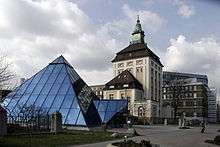
In the early 1980s Merck Group built a visitor center at its Darmstadt headquarters that featured a pyramid, the design of which was controversial.[18]
Merck was legally named E. Merck oHG until 1995. In 1995 it was listed on the Frankfurt Stock Exchange and became a KGaA, legally named Merck KGaA.
2000 to 2009
On March 13, 2006, Merck announced a takeover bid for Schering AG, the world's largest producer of oral contraceptives. On March 23, 2006, Bayer AG made a supported offer for Schering and Merck decided to drop out of the bidding for the company.[19] Schering is not to be confused with Schering-Plough which was once part of Schering AG but was acquired by Merck & Co. in 2009. In September 2006 the company announced a takeover bid of $13.2 billion for Serono SA, Switzerland's largest biotech firm. The deal included a buy-out of the Bertarelli family's 64.5% stake in Serono to be followed by a public tender offer for the remaining shares starting in November 2006.[20][21] The combined company has an R&D budget of approximately $1.1 billion and sales of approximately $4.6 billion. Its approximately $2 billion in sales of biologics would make it 7th among pharmaceutical/biotech companies. The new entity, Merck Serono, began operations in 2007.
2010 onwards
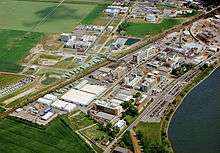
In 2010 Merck took over Billerica (MA) based Millipore Corporation for EUR 5.3 billion (US$7.2 billion).[22][23] It is now Merck's life science business unit. With the acquisition of Millipore, Merck is consolidating its US holdings and shutting down the Gibbstown facility and warehouse. Gibbstown operations will be transferred to the new Philadelphia office and Millipore headquarters.[24]
Merck Korea received the "Leading Investor Award" at the 5th Korea-EU Industrial Cooperation Day in 2011.
In December 2013, the company bought AZ Electronic Materials SA (AZEM) for about $2.6 billion in cash to increase its offering of specialty chemicals to the electronics industry.[25]
In September 2014 Merck halted the clinical development of two drug candidates in development with Oxygen Biotherapeutics. One drug candidate suffered a lack of success in patient recruitment, with its MUC1 antigen-specific cancer immunotherapy drug, tecemotide (L-BLP25), missing its Phase I/II endpoint of increasing overall survival in patients with Stage III non-small cell lung cancer.[26] Later in September it was announced that the company would acquire Sigma-Aldrich for $17 billion.[27] After the acquisition was completed in 2015, Merck has around 50,000 employees.[28] In November 2014, Merck and Pfizer agreed a deal for the latter to sell the former sharing rights to develop an experimental immunotherapy drug for a fee of $850 million.[29]
In October 2015, Merck revealed it would return the rights of the Kuvan drug to BioMarin Pharmaceutical Inc.. The drug is effective in the treatment of the rare genetic disorder PKU, however Merck is moving away from genetics into cancer treatment, immunology and neurology.[30] In October, it was announced that Karl-Ludwig Kley, CEO of Merck since April 2007, would retire in April 2016, and be succeeded by Stefan Oschmann, who has been a member of the executive board since 2011.[31] The company started building new facilities for its R&D operations and a new visitor center at its Darmstadt site in the early 2010s by 2015 had torn down the site's pyramid as part of the renovations.[32]
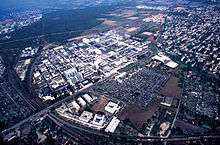
In April 2017, the company announced it had completed the acquisition of food safety testing company, BioControl Systems Inc..[33] In August of the same year the company announced the acquisition of Natrix Separations for an undisclosed sum.[34]
In April 2019, Merck announced it would acquire Versum Materials for $6.5 billion ($53-per-share).[35]
Merck consumer-health
In September 2017, Merck said it is considering options for its consumer-health division, including a potential full or partial sale, or strategic partnership. An equity analyst estimated the unit could command a purchase price of €1.8 billion to €2.7 billion from a full sale.[36] In December Reuters reported that both Nestlé and private equity owners of Stada[37] were preparing bids for Merck's consumer health group. Days later, Reuters again reported that Perrigo was also preparing a bid for the division in the region of €4 billion ($4.7 billion to $4.8 billion).[38] In April 2018, Reuters reported that generic drug manufacturer, Mylan was in advanced discussions to acquire the consumer health business for between €3.5–4 billion (£3–3.4 billion).[39] Later in the month, Reuters reported that Procter & Gamble would purchase the division for €3.4 billion euros (£2.96 billion; $4.2 billion).[40]
Name
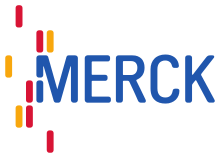
Merck in Darmstadt is the sole legal successor of the original Merck and retains the rights to the trademark "Merck" in all countries except the U.S. and Canada. In recent branding campaigns, the company has referred to itself as "the original Merck" and "the real Merck". The company was legally known as E. Merck oHG until 1995, when Merck KGaA became the main parent company and the former a holding company. Both oHG and KGaA are generic business entity type designations and not used in everyday speech or branding.
In 2015 Merck adopted a new logo and said it will be "much more aggressive" about protecting the brand of "the real Merck".[8] It has initiated litigation in several countries against its former subsidiary Merck & Co. (MSD) over infringing use of the Merck name. In 2016, the High Court of Justice in the United Kingdom ruled that MSD had breached an agreement with its former parent company and that only Merck of Darmstadt is entitled to use the Merck name in the United Kingdom; the judge also held that MSD's use of "Merck" as part of branding on its global websites were directed to the UK and infringed Merck's trade mark rights in the UK.[41] In response, MSD has initiated counter-litigation in the United States.[42]
After that controversies, Merck also adopted a new logo for EMD. The same look was also given to EMD Serono, MilliporeSigma, and EMD Performance Materials logos. Its corporate website is merckgroup.com in the world excluding U.S. and Canada, displaying normal Merck logo in the header, and emdgroup.com in U.S. and Canada, displaying Merck KGaA Darmstadt, Germany wordmark instead of Merck or EMD logo in the header, additionally displaying a disclaimer about trademark ownership in the footer.
Price fixing settlement
Generics UK (Merck's former British subsidiary, the global Generics business being sold on October 2, 2007) paid a £12M out-of-court settlement with the Department of Health and Social Care of the UK over involvement in an alleged price and supply fixing cartel.[43]
The NHS alleges various drugs companies exploited the oligopolistic market conditions, forcing the NHS to pay inflated prices. NHS fraud investigators believe there was a conspiracy to limit the supply of 30 of its most commonly prescribed drugs, including a class of penicillin antibiotics and to a generic version of best-selling ulcer treatment Zantac.[44] The NHS has so far filed claims in relation to just three drugs, seeking damages of more than £150m, while the Serious Fraud Office (SFO) is conducting a parallel investigation into the price-fixing allegations limited to the supply of blood-thinning pill warfarin and penicillin-based antibiotics. Homes and offices of executives at six firms, including Ranbaxy, Generics UK, Norton Healthcare, Goldshield and Regent-GM were raided by the SFO in May 2002.
Acquisition history
The following is an illustration of the company's mergers, acquisitions, spin-offs and historical predecessors:
| Merck KGaA |
| |||||||||||||||||||||||||||||||||||||||||||||||||||||||||||||||||||||||||||||||||||||||||||||||||||||||||||||||||||||||||||||||||||||||||||||||||||||||||||||||||||||||||||||||||||||||||||||
Healthcare
After Wilhelm Adam Sertürner's isolation of morphine from opium in 1805, Merck pioneered (from 1827) the commercial manufacture of morphine for an expanding global market. From 1884 onwards, Merck also played role in the production and marketing of cocaine. Sigmund Freud, author of Über Coca (1884), was an enthusiastic collaborator in Merck's cocaine research, though the methodological sophistication of his self-experimentation studies has been challenged. Attention was directed at vitamins as a new product category, and Vigantol was introduced in 1927, followed by Cebion in 1934.
Following the defeat of Germany in World War II, Merck was granted permission by the military government to produce drugs, pesticides, food preservatives, reagents, and fine chemicals for laboratory use. Soon afterward the boom is commonly known as the "Wirtschaftswunder" (economic miracle) set in. For Merck, this meant two-digit sales-growth figures for many years. Products of this time included corticoid preparations — for example Fortecortin, which is still used today — the cold remedy Nasivin or the hormone preparations Gestafortin and Mantova.
Merck currently employs over 2500 people in its 4 R&D hubs via. Boston, Darmstadt, Beijing and Tokyo.[45] In the year 2013, Merck invested over €1183 million in its R&D operations.[45] The focus of Merck's current pharmaceutical R&D is on oncology and cardio-metabolic care. In the former therapeutic area, its first marketed product is Erbitux (cetuximab), for which it has marketing rights worldwide, apart from North America. (Cetuximab was discovered by Imclone Systems, and is marketed in North America by Bristol-Myers Squibb.) Other products from Merck include Metformin, Bisoprolol, Levothyroxine and Digitoxin. Merck's clinical research strategy consists of a partnership with Quintiles in which the latter helps the former in the clinical development of all its compounds.[46]
Chemistry
In the chemicals sector, work started on effect pigments in 1957. An example for these pigments are alumina effect pigments sold under brand name Xirallic®.[47] Ten years later the company initiated its involvement in liquid crystals, leading to its market-leading role today. Liquid crystals account for the bulk of Merck's profits at present. Currently they're the world leader in producing liquid crystals for Flat-TV's and monitors.[48]
In the area of analytical chemistry, Merck plays a leading role in the development of chromatographic methods and materials.
Life science
The life science business of Merck, formerly known as Merck Millipore, was created in July 2010 following the completed acquisition of the US company Millipore. This division comprises all Millipore activities and major segments of the former Merck division Performance & Life Science Chemicals. Merck Millipore had three business units: Bioscience, Lab Solutions and Process Solutions. The Bioscience business unit is dedicated to solutions and reagents for protein research and cell biology, cell culture solutions, as well as to products and services for the development of biopharmaceutical agents. The scope of activities of Lab Solutions includes laboratory chemicals and other materials for research, science and industry, products and services for sampling, and test kits for the pharmaceutical, foods and diagnostics industries, along with products, consumables and services surrounding highly purified laboratory water for science and industry. Process Solutions focuses on products and services for the production of chemical and biopharmaceutical agents.
In 2015, Merck acquired SigmaAldrich and combined it with Merck Millipore. The company was branded Merck globally and MilliporeSigma in the United States and Canada. The newly established life science business of Merck has 300,000 products and three business units: Research Solutions, Process Solutions and Applied Solutions. The company serves customers in biotech, pharma, diagnostics, food safety, academia, and environmental. Udit Batra serves as the CEO of the life science business of Merck.
The Life Science business sponsors several award programs for graduate students. One of these awards, the Alfred R. Bader Award for Student Innovation recognizes advanced chemistry graduate students, typically in the field of synthetic organic chemistry.
Performance materials
Liquid crystals
Merck is a pioneer in the field of LCD technology and the world’s largest producer of liquid crystals, which are required for the manufacture of LC/TFT displays. The global market share is over 60%. As a result, the company is considered to be a so-called hidden champion. In March 2005 Merck acquired Covion Organic Semiconductors GmbH, a part of the Avecia Group. The company, originally a split-off from the Hoechst AG, and headquartered in the Höchst Industrial Park, produces organic light-emitting materials for OLEDs. Now renamed in Merck OLED Materials GmbH, the company is an essential element in the liquid crystal segment. Merck paid 50 million Euros for the acquisition, which included a research and development unit in the polymer electronics sector, and which is located in Manchester.
On April 2, 2007, Merck announced the liquidation of OLED Materials GmbH, with assets to be transferred to Merck KGaA. 100 employees were integrated into the liquid crystal division. The Liquid Crystals sector also includes materials for photovoltaics and the lighting industry.[49]
Pigments and cosmetics
This business unit pools all activities for pigments in lacquering, printing, and plastic applications, in the field of security technology (for instance counterfeiting protection), pigments for applications in the food and pharmaceutical areas, functional materials, and active substances and pigments for cosmetics.
Emanuel Merck Lectureship Award
The award was jointly established by Merck and the Technische Universität Darmstadt in 1992. It recognizes globally-renowned scientists who have made superb contributions to chemical and pharmaceutical research.
References
- https://www.underconsideration.com/brandnew/archives/new_logo_and_identity_for_merck_kgaa_darmstadt_germany_by_futurebrand.php
- "Geschäftsentwicklung 2015–2019".
- "Capital structure and governance bodies of Merck KGaA | Annual Report 2015, Merck KGaA, Darmstadt, Germany".
- "Merck KGaA, Darmstadt, Germany Annual Report 2016 | Merck KGaA, Darmstadt, Germany Annual Report 2016".
- Das älteste Chemieunternehmen der Welt. In: Manager Magazin 21 September 2006
- M. Richter and I. Gomez: Zum Verwechseln gleich. In: Financial Time Deutschland 21 January 2010 Archived July 26, 2010, at the Wayback Machine
- https://www.merck.com/about/our-history/home.html/%7Ctitle%5B%5D = Our History Timeline|access-date = 2 April 2018|
- A Tale of Two Mercks as Protesters Take On Wrong Company, Bloomberg
- "Merck gears up for its 350th Anniversary". Bio Spectrum. 8 February 2018. Retrieved 2 November 2018.
Merck is celebrating its 350th anniversary. The theme of the celebration will be “Always curious - Imagine the next 350 years”.
- Darmstadt, Technische Universität. "Strategische Partnerschaften". Technische Universität Darmstadt (in German). Retrieved 2019-07-29.
- Merck KGaA (Editor): „Was der Mensch thun kann...“ – Ein Streifzug durch die Geschichte des pharmazeutisch-chemischen Unternehmens Merck. September 2003
- Palmer, A. Mitchell (April 1919). "Report of the alien property custodian on the chemical industry". Ind. Eng. Chem. 11 (4): 364. doi:10.1021/ie50112a030.
I am of the opinion, however, that indirect ownership of this kind cannot be recognized under the Trading-with-the-Enemy Act, and I have, therefore, determined that the whole of this stock is enemy owned and it has accordingly been taken over.

- Staff (15 January 2016). "Legal Wrangle Pits Merck vs. Merck". Gen. Eng. Biotechnol. News. Retrieved 17 January 2016.
- "Von Adelung bis Zwangsarbeit - Stichworte zu Militär und Nationalsozialismus in Darmstadt". Deutsche Friedensgesellschaft - Vereinigte KriegsdienstgegnerInnen Gruppe Darmstadt (in German). Retrieved 8 May 2020.
- "Stationen unserer Geschichte ab 1917". Merck Group (in German). Retrieved 8 May 2020.
- Burhop, Carsten; Kißener, Michael; Schäfer, Hermann; Scholtyseck, Joachim (2018). Merck : From a pharmacy to a global corporation. C.H. Beck. p. 332. ISBN 9783406700408.
- "British Drug Houses Limited". The Science Museum Group. Retrieved 1 July 2017.
- "Merck in Darmstadt: Die Pyramide ist Geschichte". Frankfurter Rundschau (in German). 20 November 2013.
- Schering rät zur Annahme der Bayer-Offerte. In: Manager Magazin Online 19 April 2006
- Serono-Übernahme – Mercks Milliardendeal. In: manager magazin 21 September 2006
- Staff, First Word Pharma. Sept 21, 2006 Merck KGaA to acquire Serono
- "STOCKS NEWS US-Merck KGaA to buy Millipore for $6 bln". FinanzNachrichten.de. 1 March 2010.
- Merck KGaA and Millipore Announce Transaction
- "Bloomberg - Are you a robot?".
- "Merck KGaA to Buy Chemical Maker AZ for $2.6 Billion". December 6, 2013.
- "Merck KGaA, Oxygen Suspend Development of Drug Candidates". GEN. 2014-09-12.
- Staff (22 September 2014). "Merck KGaA to Acquire Sigma-Aldrich for $17B". Genetic Engineering & Biotechnology News. Retrieved 5 April 2015.
- "Press Release: Merck Completes Sigma-Aldrich Acquisition".
- Pfizer dampens Astra bid hopes with German Merck cancer deal. Reuters, 17 November 2014
- "Germany's Merck sells rights to Kuvan back to BioMarin Pharma". Reuters. 1 October 2015.
- Divac, Natascha (13 October 2015). "Germany's Merck Names New CEO". WSJ. Retrieved 14 October 2015.
- Smolka, Klaus Max (December 28, 2015). "German-American innovation for health". deutschland.de, by the Societäts-Medien GmbH in cooperation with the Federal Foreign Office, Berlin.
- http://news.merck.de/N/0/847326AFB3463A63C125809D00382399/$File/Merck_Acquires_BioControl_EN_PM_Final.pdf
- "MilliporeSigma to Acquire Natrix Separations". 2017-08-28.
- "Merck KGaA clinches $6.5 billion Versum takeover in bet on..." 12 April 2019 – via uk.reuters.com.
- Roland, Denise (5 September 2017). "Germany's Merck Puts Consumer Drugs Business on the Block". Wall Street Journal. Retrieved 5 September 2017.
- "Nestle, Stada prepare rival bids for Germany's Merck consumer". Reuters. December 2017.
- "Perrigo lines up bid for Merck's consumer health unit: Sources". Reuters. 2017-12-14.
- "Mylan seeks deal for German Merck's consumer products unit: Sources". Reuters. 2018-04-13.
- "P&G to buy German Merck's consumer health unit for $4.2 billion". Reuters. 2018-04-23.
- Fight over Merck name sees German firm win in British court, Reuters
- "Legal Wrangle Pits Merck vs. Merck". GEN. 2016-01-15.
- Bowers, Simon (June 30, 2005). "Merck subsidiary pays £12m over price-fixing claims in sales to NHS". The Guardian. London. Retrieved 2007-10-11.
- Lister, Sam (April 6, 2006). "Drug chiefs on price-fixing charges". The Times. London. Retrieved 2007-10-11.
- Merck KGaA, Darmstadt, Germany (14 October 2015). "Innovation - R&D overview - EMD Group". merckgroup.com.CS1 maint: multiple names: authors list (link)
- "Merck Serono discusses its strategic partnership with Quintiles at PCT". Outsourcing-Pharma.com.
- Merck KGaA, Darmstadt, Germany. "EMD Performance Materials - Xirallic® – for coatings with strong colored sparkle effects". emd-performance-materials.com.CS1 maint: multiple names: authors list (link)
- H. Simon: Hidden Champions des 21. Jahrhunderts: Die Erfolgsstrategien unbekannter Weltmarktführer. Campus, 2007. ISBN 978-3-593-38380-4. p. 20.
- W. Huber: Merck KGaA übernimmt OLED- und Polymerelektronik-Aktivitäten von Avecia. Pressemitteilung der Merck KGaA vom 8. Februar 2005
External links
| Wikimedia Commons has media related to Merck KGaA. |